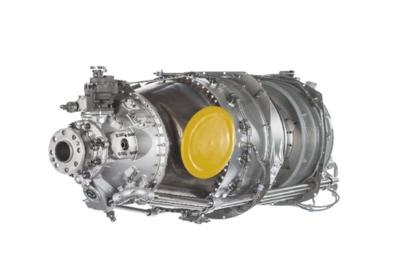Operators To Benefit From Introduction of Single-Engine IFR Commercial Passenger Flights
Pratt & Whitney Canada's (P&WC) PT6A engine is poised for considerable incremental growth across Europe thanks to a regulatory change that will open the continent's skies to single-engine instrument flight rules (IFR) flights for commercial passenger service. P&WC played a leadership role in helping EASA develop the guidelines that standardize and expand the use of single-engine turbine aircraft flying commercial passenger missions throughout Europe, expected to be in place by early 2017.

"For European operators offering commercial passenger service, the approval of single-engine IFR positions the PT6A engine at the head of the pack and permits operators to reduce their operational costs. This provides operators a significant competitive advantage, opening up entirely new opportunities in charter and commuter services," says Denis Parisien, Vice President, General Aviation P&WC. "The European IFR certification, enabled by the benchmark reliability of the PT6A, allows business ventures that were previously not viable in Europe, and boosts demand for single-engine aircraft across the continent."
The PT6A engine has been an enabler of single-engine IFR commercial passenger operation in other parts of the world for two decades. Since the 1990s, IFR single-engine flight has been permitted in North America, New Zealand and Australia for aircraft powered by the PT6A. "We have been working closely with EASA on single-engine IFR certification," said Parisien. "The ruling will open up new short-haul routes between city pairs, including smaller airports that cannot accommodate jets but can easily manage small passenger turboprops."
The PT6 engine is a testament to P&WC's commitment to developing technology that meets operators' evolving requirements and increases the value of its offering to customers in order to respond their business and market needs. Since it entered into service in 1963, P&WC has consistently driven further innovations into the PT6, often opening the door to new applications and making new flight missions possible thanks to its unique attributes.
Today's PT6 engine is four times more powerful, has a 50 percent better power-to-weight ratio and is 20 percent more fuel efficient. P&WC has produced over 55,000 PT6 engines, of which 22,000 are in operation. The engine powers 140 different applications and has logged more than 400 million flight hours. Getting aircraft safely over the Atlantic every single time, it has the best safety record in the business - making it the engine of choice for single-engine IFR.

"The success of the PT6 engine can largely be attributed to the fact that it is a proven, scalable design with more than five decades of service excellence under its belt, complemented by our dedication to constantly making a great engine even better," notes Parisien. "The technology is long-proven, representing a significant body of engineering achievement in the aviation industry, and continues to make new aircraft possible. It is one of the most valuable technology asset in the global turboprop field."
P&WC has continued to build on the PT6 family's legacy in recent times and introduced the latest engines, the PT6A-140 series, which has been selected to power the Caravan EX and Air Tractor's AT502XP. New technological innovations continue to simplify maintenance and improve operators' bottom line, including an aluminum inlet case for large PT6A engine models and platinum aluminide coating to enhance resistance to sulphidation for small PT6A engines. More improvements are on the horizon, such as integrated electronic engine & propeller control and a 2,000+ SHP thermal power engine.
PT6A operators also benefit from the most comprehensive, dependable customer support in the industry, which ensures they get what they want, when and where they want it. Customers are supported by two Customer First Centres available 24/7 and a global network of strategically positioned P&WC and affiliated maintenance, repair and overhaul facilities. P&WC has more than 1,500 fixed base operators worldwide, including 400 in Europe, who support its product lines, with more than half providing dedicated maintenance support for PT6A engines.
(Source: Pratt & Whitney Canada news release. Image from file)
 Bolen Gives Congress a Rare Thumbs-Up
Bolen Gives Congress a Rare Thumbs-Up The SportPlane Resource Guide RETURNS!!!!
The SportPlane Resource Guide RETURNS!!!! Buying Sprees Continue: Textron eAviation Takes On Amazilia Aerospace
Buying Sprees Continue: Textron eAviation Takes On Amazilia Aerospace Hawker 4000 Bizjets Gain Nav System, Data Link STC
Hawker 4000 Bizjets Gain Nav System, Data Link STC Echodyne Gets BVLOS Waiver for AiRanger Aircraft
Echodyne Gets BVLOS Waiver for AiRanger Aircraft




